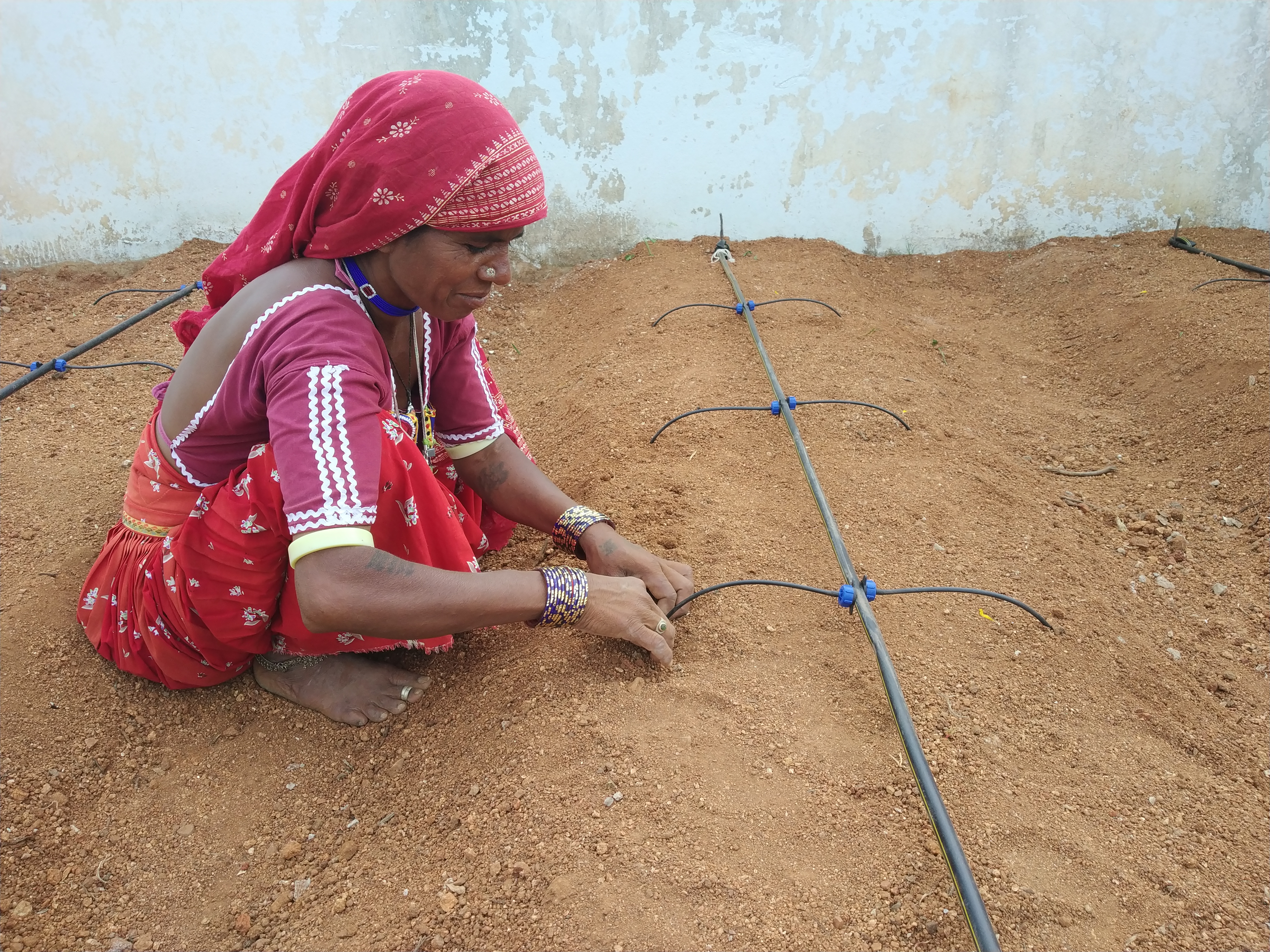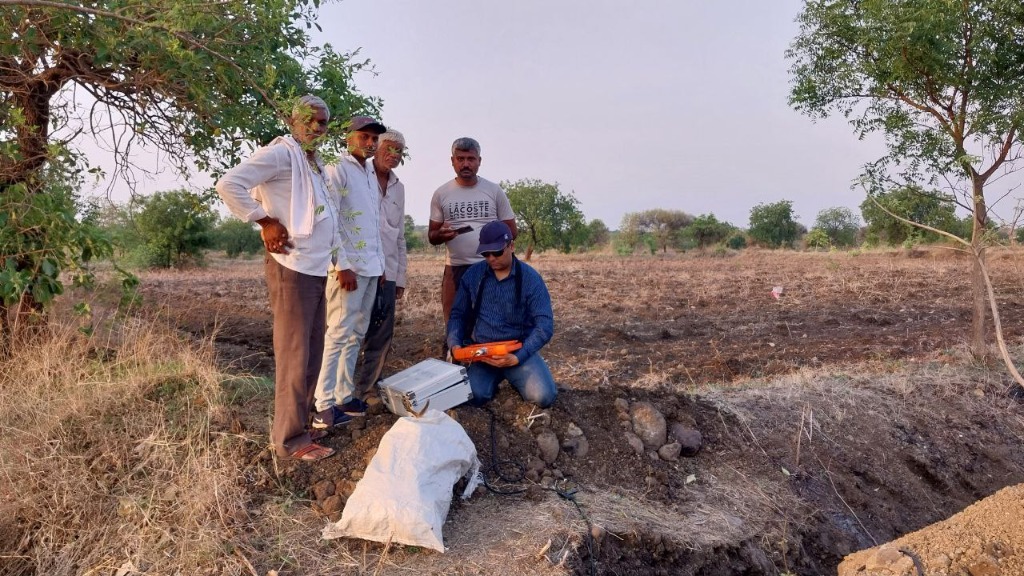GCA is highlighting the work of small and large businesses that are expanding access to adaptation solutions or technologies that address local climate-related vulnerabilities. Applications received for the 2023 Local Adaptation Champions Awards also show how locally led efforts around the world are supporting leadership by local communities and governments in adaptation efforts and are helping to address structural inequalities, such as those faced by women, youth, and indigenous peoples.
The Local Adaptation Champions Awards reward inspiring and scalable locally led adaptation efforts to address the impacts of climate change and build resilience in the most vulnerable communities. There were four categories for 2023: Capacity Building, Business Adaptation Solutions, Innovation in Devolving Finance, and Women in Leadership. Over 500 applications were received from individuals and organizations for this year’s awards, and applications came in from all over the world. A high-level jury will select one winner in each category, and the four winners will receive €15,000 at an Awards Ceremony at COP28 and get an opportunity to attend the Adaptation Fund’s readiness events.
The final five nominees in the Business Adaptations Solutions category have implemented or are implementing climate change adaptation or resilience interventions that follow one of the eight Principles of Locally Led Adaptation.
South Asian Forum for Environment
 The India-based South Asian Forum for Environment has implemented climate-smart floating bamboo farms in coastal communities where rising sea levels have negatively impacted income and food security. Grow-bags filled with recycled organic soil are used for hydroponic horticulture and the production of cash crops, and fish and crab are farmed using desalination and micro-irrigation technologies. The project involves transferring the technology package to the communities to decrease climate risk, improve distributed production, and manage single-channel commercialization to reach the market. As Dipayan Dey, who heads the research and innovation team, explains, “This floating infrastructure can also support livestock and can work as storage for food and grain, which are essential for adapting to climate impacts.” This intervention has already proved its resilience to two super-cyclones and has directly benefited 22,750 beneficiaries in 10 coastal villages in India.
The India-based South Asian Forum for Environment has implemented climate-smart floating bamboo farms in coastal communities where rising sea levels have negatively impacted income and food security. Grow-bags filled with recycled organic soil are used for hydroponic horticulture and the production of cash crops, and fish and crab are farmed using desalination and micro-irrigation technologies. The project involves transferring the technology package to the communities to decrease climate risk, improve distributed production, and manage single-channel commercialization to reach the market. As Dipayan Dey, who heads the research and innovation team, explains, “This floating infrastructure can also support livestock and can work as storage for food and grain, which are essential for adapting to climate impacts.” This intervention has already proved its resilience to two super-cyclones and has directly benefited 22,750 beneficiaries in 10 coastal villages in India.
INMED South Africa NPC
 INMED South Africa NPC launched its climate-smart Aquaponics Social Enterprise (ASE) model as a means to address food security, climate change adaptation, and inclusion. ASE is a hub-and-spokes model of virtual and physical training sites, mentors, and learning centers to support satellite farmers producing vegetables and fish through climate-smart aquaponics, which is a sustainable farming method that combines the cultivation of aquatic organisms like fish with growing plants without soil. “Through our social entrepreneurship model, we aim to transition historically disadvantaged populations from subsistence to commercial agriculture production,” Unathi Sihlahla, Director of INMED South Africa NPC, explains. This is achieved through app-based and real-time assistance and by providing links to markets and proper financing through grants, public investment, and revenue-based income. The initiative is currently being implemented in nine provinces in South Africa.
INMED South Africa NPC launched its climate-smart Aquaponics Social Enterprise (ASE) model as a means to address food security, climate change adaptation, and inclusion. ASE is a hub-and-spokes model of virtual and physical training sites, mentors, and learning centers to support satellite farmers producing vegetables and fish through climate-smart aquaponics, which is a sustainable farming method that combines the cultivation of aquatic organisms like fish with growing plants without soil. “Through our social entrepreneurship model, we aim to transition historically disadvantaged populations from subsistence to commercial agriculture production,” Unathi Sihlahla, Director of INMED South Africa NPC, explains. This is achieved through app-based and real-time assistance and by providing links to markets and proper financing through grants, public investment, and revenue-based income. The initiative is currently being implemented in nine provinces in South Africa.
System of Water for Agriculture Rejuvenation
 The System of Water for Agriculture Rejuvenation (SWAR) was co-created by the Centre for Environment Concerns and farmers in India to improve production on farms facing severe water shortages. The system employs a moisture diffuser at the plant-root level, and data from a portable moisture probe reduces water application by up to 50%. This results in 10% higher yields compared to drip irrigation systems and also addresses groundwater scarcity and soil health. After receiving grants to pilot-test the technology, the Centre for Environment Concerns now commercializes the SWAR system through a social enterprise model. Five hundred small farmers, including 200 women, currently employ SWAR to cultivate diverse crops in drought-prone areas of India, but Santana Gopal Komandur, Director of the project, has far-reaching aims: “Over time, we will cover all drought-prone, water-scarce areas in India and mainstream this learning and impact to inform tropical regions.”
The System of Water for Agriculture Rejuvenation (SWAR) was co-created by the Centre for Environment Concerns and farmers in India to improve production on farms facing severe water shortages. The system employs a moisture diffuser at the plant-root level, and data from a portable moisture probe reduces water application by up to 50%. This results in 10% higher yields compared to drip irrigation systems and also addresses groundwater scarcity and soil health. After receiving grants to pilot-test the technology, the Centre for Environment Concerns now commercializes the SWAR system through a social enterprise model. Five hundred small farmers, including 200 women, currently employ SWAR to cultivate diverse crops in drought-prone areas of India, but Santana Gopal Komandur, Director of the project, has far-reaching aims: “Over time, we will cover all drought-prone, water-scarce areas in India and mainstream this learning and impact to inform tropical regions.”
Footsteps Bangladesh
 In flood-prone regions of Bangladesh, floods often destroy traditional water sources and thousands of plastic bottles of drinking water are distributed in emergency response kits. Shah Rafayat Chowdhury, Co-Founder and President of Footsteps Bangladesh, saw this as an opportunity to develop new technology. He created the Dreamwater Filter, a portable, lightweight filtration device that can convert flood water into drinking water. Footsteps has commercialized the filter and also uses a social enterprise model to create income generation opportunities for the community during off-flood season: owners can become entrepreneurs by selling safe drinking water produced by the filter or become technicians who service the filters. “The potential of Dreamwater is immense, as it is able to harness a disaster and transform it into both opportunity and hope for people affected by floods nationwide,” Chowdhury notes.
In flood-prone regions of Bangladesh, floods often destroy traditional water sources and thousands of plastic bottles of drinking water are distributed in emergency response kits. Shah Rafayat Chowdhury, Co-Founder and President of Footsteps Bangladesh, saw this as an opportunity to develop new technology. He created the Dreamwater Filter, a portable, lightweight filtration device that can convert flood water into drinking water. Footsteps has commercialized the filter and also uses a social enterprise model to create income generation opportunities for the community during off-flood season: owners can become entrepreneurs by selling safe drinking water produced by the filter or become technicians who service the filters. “The potential of Dreamwater is immense, as it is able to harness a disaster and transform it into both opportunity and hope for people affected by floods nationwide,” Chowdhury notes.
Aumsat Technologies LLP
 In India, Aumsat Technologies LLP has innovatively harnessed satellite-based radar analytics to address the pressing issue of water scarcity exacerbated by climate change. Riddhish Soni, Chief Executive Officer, utilized his experience on the Chandrayaan-2 lunar mission to develop Aumsat, a revolutionary device that can find pipeline leaks in 10-meter-thick concrete and pinpoint precious water sources 60 meters underground. The business model is based on users paying a fee per hectare per year to access a web-based platform and analytical services that facilitate precision-farming and smart-resilient agriculture, and Aumsat’s impressive accuracy rate of 90% far exceeds the roughly 28% success rate of traditional techniques like dowsing with twigs and coconuts. As Soni explains, “Aumsat emerged as a beacon of hope, seamlessly bridging the marvels of space technology with pressing earthly concerns, illuminating a path toward a more hydrated and hopeful future for India.”
In India, Aumsat Technologies LLP has innovatively harnessed satellite-based radar analytics to address the pressing issue of water scarcity exacerbated by climate change. Riddhish Soni, Chief Executive Officer, utilized his experience on the Chandrayaan-2 lunar mission to develop Aumsat, a revolutionary device that can find pipeline leaks in 10-meter-thick concrete and pinpoint precious water sources 60 meters underground. The business model is based on users paying a fee per hectare per year to access a web-based platform and analytical services that facilitate precision-farming and smart-resilient agriculture, and Aumsat’s impressive accuracy rate of 90% far exceeds the roughly 28% success rate of traditional techniques like dowsing with twigs and coconuts. As Soni explains, “Aumsat emerged as a beacon of hope, seamlessly bridging the marvels of space technology with pressing earthly concerns, illuminating a path toward a more hydrated and hopeful future for India.”